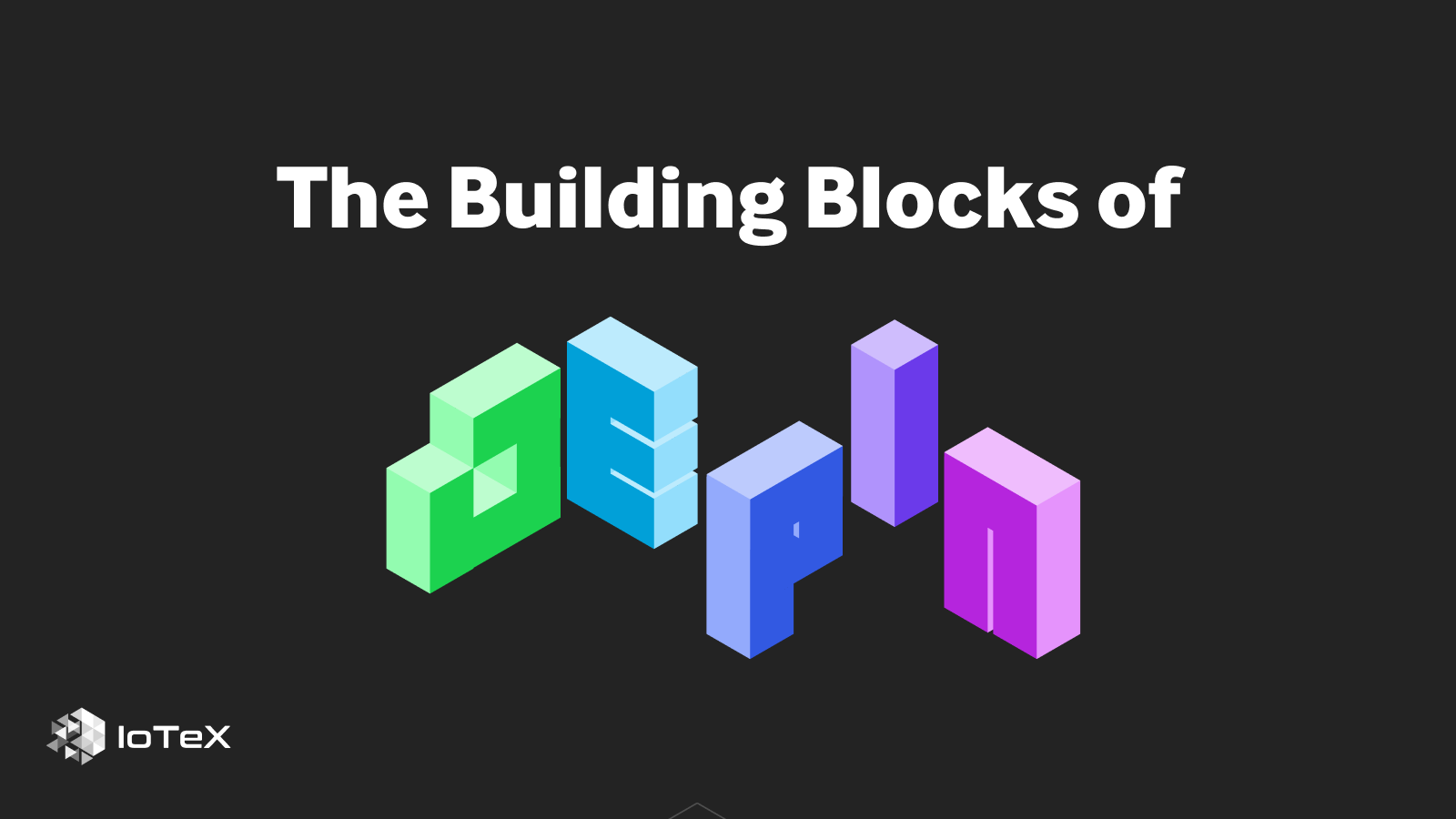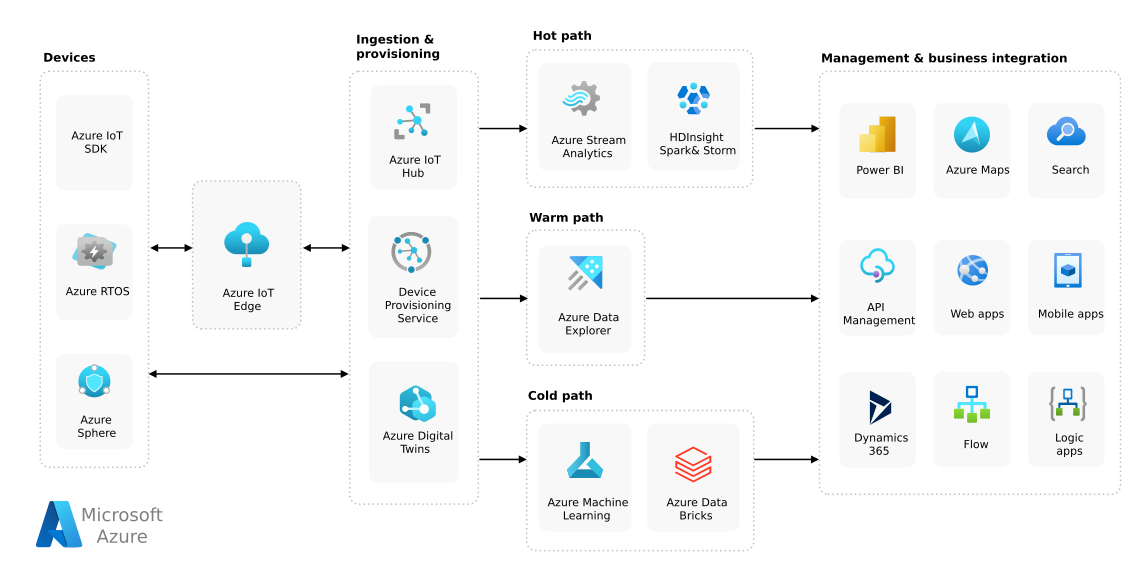The Building Blocks of DePIN
Currently, most DePIN projects depend on traditional Web2 architectures that activate blockchain token rewards. We now explore what a modular architecture for DePINs might look like. Building a DePIN application involves a complex tech stack, consisting of composable and modular layers.

Decentralized Physical Infrastructure Networks (DePINs) are transforming our approach to infrastructure by integrating smart devices with blockchain technology. This combination enables a revolutionary way to manage and secure both digital and physical environments. However, a standardized architecture for DePINs has not yet been established. Currently, most DePIN projects depend on traditional Web2 architectures that activate blockchain token rewards. Despite this, the core logic of DePINs remains centralized, often confined to cloud-based systems, which limits their potential for true decentralization.

Cloud-Centric IoT Reference Architectures
To design a decentralized infrastructure for DePINs, examining the evolution of centralized Cloud and IoT infrastructures over the past decade offers valuable insights. These systems demonstrate the benefits of modular design, adapting to accommodate diverse technological needs. The typical IoT architecture includes several components:

- Smart Devices: A wide range of smart devices, more or less complex, can be connected to the cloud by installing device SDKs, operating systems, and device credentials provided by cloud service providers.
- Connectivity Management Services: The connectivity management services handle the complexity of various communication protocols and ensure secure two-way communication between smart devices and cloud services.
- Identity and Access Management Services: The identity management services manage the identity lifecycle (i.e., creation, onboarding, monitoring, reporting, maintenance, and offboarding) and the relationship of smart devices with their owners.
- Device Management Services: The device management services manage the lifecycle (i.e., provisioning, deployment, maintenance, and decommissioning) of smart devices.
- Data Storage Services: The data storage services handle both the short-term and long-term storage of data collected from smart devices.
- Data Processing Services: The data processing services process data collected from smart devices based on pre-configured rules to gain insights about the physical world.The cloud computing infrastructure, despite its highly centralized nature, offers numerous components that are ideal for building a modular DePIN infrastructure.
A Modular DePIN Architecture
Let's now explore what a modular architecture for DePINs might look like. Building a DePIN application involves a complex tech stack, consisting of composable and modular layers, as illustrated in the figure below:

Hardware Abstraction Layer (HAL)
The Hardware Abstraction Layer (HAL) aims to simplify the complexity and diversity of a wide range of smart devices, both large and small, and enable them to connect securely with either a centralized or decentralized Connectivity Layer (CL). A universal, lightweight embedded SDK that supports popular microcontroller families (e.g., ESP32, Arduino, STM32), single-board computers (e.g., Raspberry Pi, ODROID, Rock Pi), and smartphones (e.g., Android, iOS) is highly desirable.
Connectivity Layer (CL)
The Connectivity Layer (CL) could be either a centralized service, such as a cloud-based IoT gateway, or a decentralized network. This layer generally supports various communication protocols (e.g., HTTP(s), WebSocket, MQTT, CoAP) and is responsible for reliably transmitting data collected from smart devices to the Sequencer Layer (SL).
Sequencer Layer (SL)
The Sequencer Layer (SL) could be either a centralized service or a decentralized network that sorts data packets from smart devices before storing them in the Data Availability Layer (DAL). The SL also coordinates between the DAL and the Off-Chain Computing Layer (OCCL), retrieving data sets from the DAL and processing them in the OCCL to generate corresponding validity proofs. The results and proofs might then be sent to the Blockchain Layer (BL) by the nodes in the SL.
Data Availability Layer (DAL)
The Data Availability Layer (DAL) can be either a centralized service or a decentralized network that temporarily stores data for a specified period as determined by a DePIN project. Once this period expires, the data may be immediately deleted or transferred to the Long-Term Storage Layer (LTSL). Depending on the project's configuration, the DAL also periodically commits data sets (e.g., computing a hash) to the Blockchain Layer (BL) to ensure data integrity.
Long-Term Storage Layer (LTSL)
The Long-Term Storage Layer (LTSL) can be either a centralized service or a decentralized network designed for long-term data retention, tailored to the needs of DePIN projects. Stored data can be accessed from the LTSL for various purposes (e.g., sharing with third parties) via storage APIs, following predefined access policies.
Off-Chain Computing Layer (OCCL)
The Off-Chain Computing Layer (OCCL) can function as either a centralized service or a decentralized computing resource pool capable of executing project-specific business logic on the data stored in the DAL and generating validity proofs (e.g., zero-knowledge proofs, TEE-based attestations) for the computations. This ensures that specified computations have been accurately performed on certain inputs, allowing the results to be trusted and publicly verified.
Blockchain Layer (BL)
The Blockchain Layer (BL) acts as the trust anchor of a DePIN application, managing participant identities, transactions, device data, and status, among other functions. It also handles crucial tasks such as verification of off-chain computations, orchestration of machine networks, distribution of token rewards to DePIN miners, and on-chain governance.
Identity Layer (IL)
The Identity Layer (IL) manages both on-chain and off-chain identities (e.g., account abstraction (AA) wallets, decentralized identifiers (DIDs)) for all entities involved in DePINs, such as smart devices, users, and servers. While on-chain identities (e.g., an Externally Owned Account (EOA) or AA wallet) allow users to manage DePIN assets, off-chain identities (e.g., a DID or X.509 certificate) enable secure interactions among machines.
Governance Layer (GL)
The Governance Layer (GL), which could operate on-chain, off-chain, or in a hybrid manner, is responsible for defining and enforcing the policies and procedures of other layers within a DePIN tech stack. Particularly, the GL enables token holders to make decisions regarding various aspects of a DePIN project (e.g., use of the project treasury, protocol upgrades), typically through a community-based voting process.
Conclusion
The modular infrastructure described above provides a versatile and comprehensive architectural framework, ideal for developing DePIN applications. This generic blueprint is designed to be adaptable, allowing developers to tailor the architecture to meet the unique requirements of specific projects. Depending on the project’s scope and objectives, developers might opt to utilize only a subset of the proposed layers, or they might integrate several layers to enhance functionality and performance.
In future articles, we will dive deeper into each modular layer of this infrastructure in detail. We will explore the specific design considerations and technical nuances that define each layer. By dissecting how each component contributes to the overall system, we aim to provide a clearer understanding of how to optimize and implement these layers in real-world applications. These detailed explorations will assist developers and engineers in making informed decisions that align with their project goals and technical demands. Stay tuned for a thorough breakdown of each layer, filled with insights and practical advice for deploying a successful DePIN system.

About IoTeX
IoTeX is DePIN's only modular infrastructure platform connecting smart devices and real-world data to blockchains. IoTeX's middleware solution W3bstream provides the computation and verification of real-world data, bringing it on-chain while offering the modularity and customizability builders need to facilitate mass adoption. As the leading provider of DePIN infrastructure, IoTeX facilitates new rewards from devices and on/off-chain activity for users, turns personal devices into communal economies, and tokenizes the "data of everything." Backed by a global team of 60+ research scientists and engineers, IoTeX combines its EVM-compatible L1 blockchain, off-chain compute middleware, and open hardware to connect billions of smart devices, machines and sensors, and dApps across the physical and digital world.
Website | Twitter | Developer Twitter | Developer Portal | Reddit | Discord | YouTube | DePINScan


